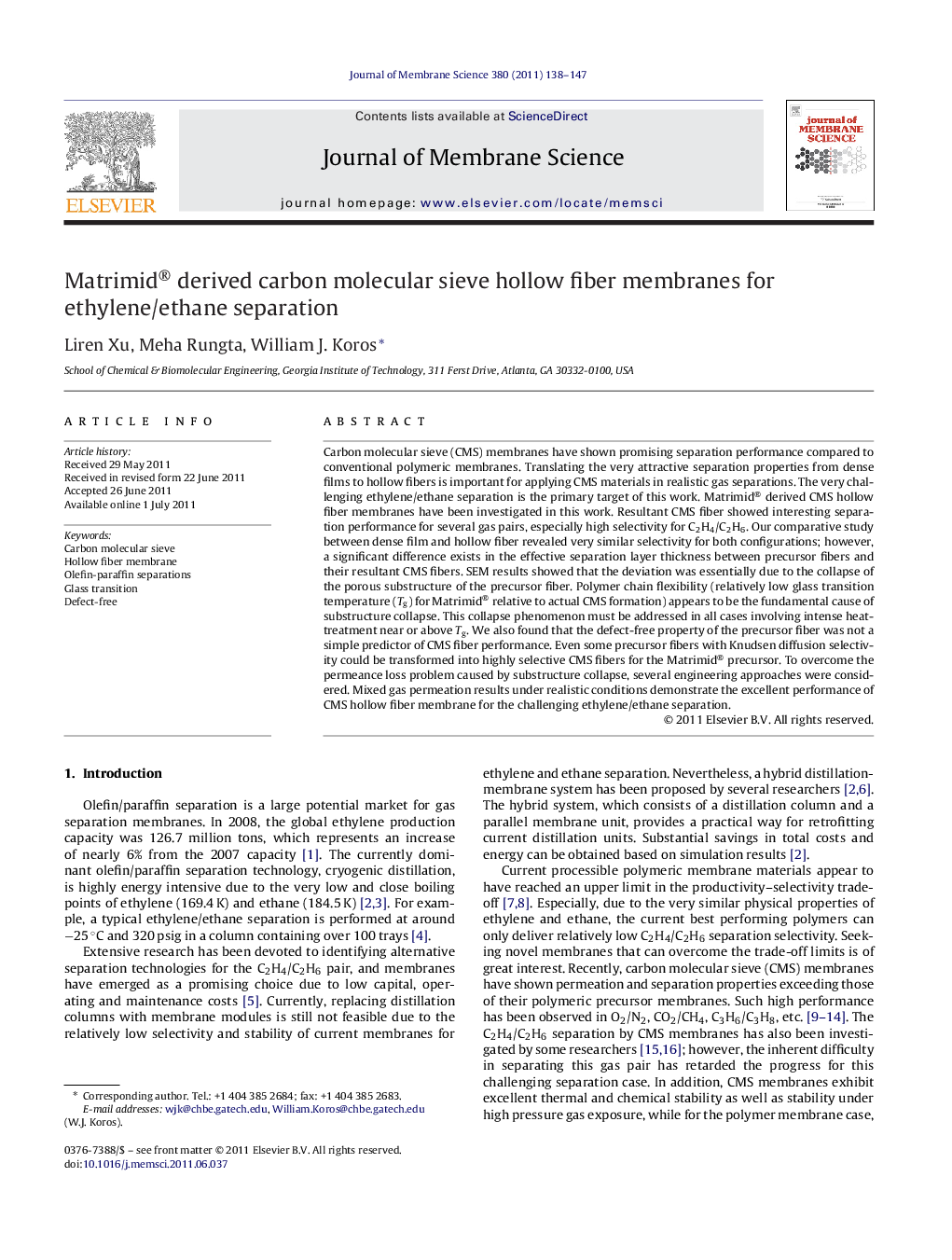| Article ID | Journal | Published Year | Pages | File Type |
|---|---|---|---|---|
| 635229 | Journal of Membrane Science | 2011 | 10 Pages |
Carbon molecular sieve (CMS) membranes have shown promising separation performance compared to conventional polymeric membranes. Translating the very attractive separation properties from dense films to hollow fibers is important for applying CMS materials in realistic gas separations. The very challenging ethylene/ethane separation is the primary target of this work. Matrimid® derived CMS hollow fiber membranes have been investigated in this work. Resultant CMS fiber showed interesting separation performance for several gas pairs, especially high selectivity for C2H4/C2H6. Our comparative study between dense film and hollow fiber revealed very similar selectivity for both configurations; however, a significant difference exists in the effective separation layer thickness between precursor fibers and their resultant CMS fibers. SEM results showed that the deviation was essentially due to the collapse of the porous substructure of the precursor fiber. Polymer chain flexibility (relatively low glass transition temperature (Tg) for Matrimid® relative to actual CMS formation) appears to be the fundamental cause of substructure collapse. This collapse phenomenon must be addressed in all cases involving intense heat-treatment near or above Tg. We also found that the defect-free property of the precursor fiber was not a simple predictor of CMS fiber performance. Even some precursor fibers with Knudsen diffusion selectivity could be transformed into highly selective CMS fibers for the Matrimid® precursor. To overcome the permeance loss problem caused by substructure collapse, several engineering approaches were considered. Mixed gas permeation results under realistic conditions demonstrate the excellent performance of CMS hollow fiber membrane for the challenging ethylene/ethane separation.
► High selectivity CMS hollow fiber membranes for the ethylene/ethane separation. ► Comparative study of CMS dense films and hollow fibers. ► Morphological evolution of Matrimid® CMS hollow fiber membrane formation. ► Effect of glass–rubber transition on hollow fiber morphology. ► The precursor defect-free property is not a simple predictor of CMS fiber performance.
